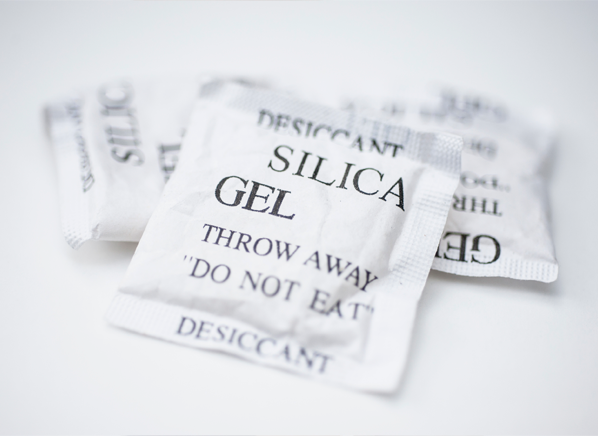Why You Shouldn’t Eat Those “Do Not Eat” Packets

Pictured above, via Consumer Reports, are some packets of silica gel. You’ll find it packaged with all sorts of products, ranging from consumer electronics and furniture to shoes and handbags. At times, you’ll even find it packed alongside food items such as beef jerky and dried seaweed — and even some vitamins and medicines. And that seems like a really bad idea because, as the silica gel pack so clearly states (with unnecessary quotation marks), “DO NOT EAT.”
But what happens if you do? The good news: you’ll most likely be okay.
Silica gel is a desiccant (as seen on the pack), which means that it’s a substance used to keep things around it dry. Basically, silica gel absorbs moisture, keeping the cell phone, leather shoes, or dried meat it’s packed with from getting ruined. If you were to rip a pack open, according to the North Carolina Poison Center, you’d find “either granular silicic acid, which resembles sand or tiny gel beads.”
You shouldn’t eat it because it isn’t food, but silica is non-toxic. The North Carolina Poison Center explicitly states that silica gel “it is not poisonous if eaten;” Illinois’ equivalent resource says that there’s no risk of overdose and that if a child were to ingest some, you should just “give the child a few sips of water.” And that’s probably just because the gel is causing a little bit of dry mouth. So if you call Poison Control, expect them to tell you not to worry. After all, as ThoughtCo explains, you’ve probably eaten silica before:
Silica is added to improve flow in powdered foods. It occurs naturally in water, where it may help confer resistance against developing senility. Silica is just another name for silicon dioxide, the main component of sand, glass, and quartz. The “gel” part of the name means the silica is hydrated or contains water. If you eat silica, it won’t be digested, so it will pass through the gastrointestinal tract to be excreted in feces.
Okay, so, why the big “DO NOT EAT” warning? The packets tend to get stuck in our throats. Or, as Slate explains, “many children don’t just eat the beads; they eat the whole packet. In that case, the hazard isn’t poison, it’s choking.” If you’re not able to get them down, that’s an enormous problem. If you are, you should be fine, but please, do not try to find out.
Either way, if you or a loved one eats a packet of “DO NOT EAT” stuff, play it safe, and call Poison Control. (Silica gel isn’t poisonous, but some other desiccants can be toxic.) In the United States, you can reach them at 1-800-222-1222.
Bonus fact: The “just because it’s not poisonous doesn’t mean it’s safe” rule applies to more than silica gel. In recent years, YouTubers have taken to something called the “cinnamon challenge,” where the host will eat a spoonful (or in this case, a ladle-full) of cinnamon, straight, and tries to swallow it within a minute. It’s a bad idea. As CBS explains, if you choke on the cinnamon, it can aspirate into the lungs, causing a lot more pain than you’d think. Unlikely? CBS has data which says otherwise: “according to the American Association of Poison Control Centers (AAPCC), about 88 percent of phone calls in the first three months of 2012 to the nation’s poison control centers were related to the cinnamon challenge.”
From the Archives: Liquor, Sicker: How poison played a role in enforcing Prohibition.
